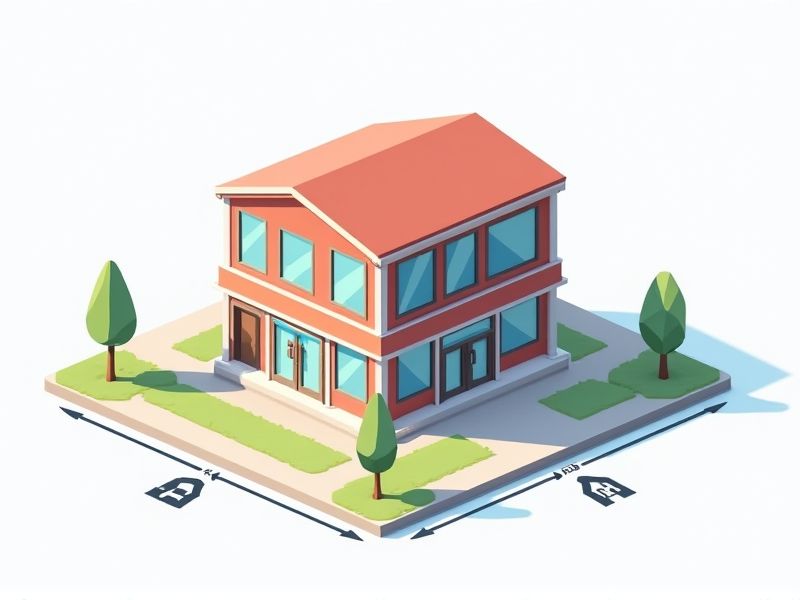
Public libraries are typically designed with standardized dimensions that cater to accessibility, comfort, and efficient use of space. For example, reading areas often provide at least 2.5-3 square meters per user, while aisles between bookshelves should be a minimum of 90 centimeters wide for wheelchair access. Many library standards suggest ceiling heights between 3-4 meters to allow for proper ventilation and lighting. By adhering to these dimensions, libraries can ensure their spaces are welcoming, safe, and functional for all visitors.
Accessibility Requirements
Public libraries prioritize accessibility by adhering to the Americans with Disabilities Act (ADA) guidelines, ensuring all facilities meet specific standards for individuals with disabilities. This includes the installation of ramps, elevators, and accessible restrooms, which collectively enhance access for roughly 15% of the population who have a disability. Additionally, libraries offer assistive technologies such as screen readers and magnification software, designed to support patrons with visual impairments. In 2022, a survey indicated that over 70% of U.S. public libraries implemented programs specifically tailored to improve accessibility and inclusivity for diverse communities.
Space Allocation Guidelines
Public library space allocation guidelines recommend a minimum of 0.5 to 0.7 square feet per capita for the general population served, ensuring ample room for books, technology, and community activities. The ideal layout includes designated areas for children, teens, and adults, along with quiet study zones and collaborative spaces, enhancing user experience. It is suggested that libraries maintain at least 20% of their total space for flexible programming, allowing for workshops and events that adapt to community needs. Effective signage and accessibility features are crucial, optimizing usability for individuals with disabilities and encouraging maximum engagement with library resources.
Shelf Height Standards
Public library shelf height standards typically range from 42 to 54 inches for adult sections, ensuring accessibility and ease of use for patrons. Children's sections often feature lower shelves, ideally between 28 and 36 inches, allowing young readers to reach materials independently. The American Library Association (ALA) recommends that top shelves should not exceed 72 inches, accommodating the average user's height while minimizing the risk of injury during retrieval. By adhering to these guidelines, libraries enhance user experience and promote a welcoming environment for all ages.
Aisle Width Specifications
Public library aisle width specifications typically require a minimum of 36 inches to facilitate accessibility for patrons, including those with mobility devices. In spaces where high traffic is expected, such as near checkout counters or reading areas, aisle widths may be increased to 48 inches or more. Compliance with the Americans with Disabilities Act (ADA) often influences these requirements, ensuring that all individuals can navigate the library environment comfortably. Your local library may implement additional guidelines based on its layout and community needs to enhance visitor experience.
Seating Capacity Norms
Public library seating capacity norms typically recommend a minimum of 10-15 square feet per person to ensure comfort and accessibility. This translates to an average library aiming to accommodate around 50-100 patrons across various functional areas, including reading rooms and study zones. To optimize user engagement, libraries should consider incorporating ergonomic furniture and quiet zones within their design. Creating an inviting atmosphere with adequate seating can enhance community members' overall experience, encouraging regular visits and extended study sessions.
Lighting And Ventilation Criteria
Public libraries typically adhere to specific lighting and ventilation standards to ensure a conducive environment for reading and studying. Optimal lighting levels range from 300 to 500 lux for general areas, while task lighting can reach 1,000 lux for study spaces. Ventilation systems are designed to achieve a minimum air exchange rate of 6 to 10 air changes per hour to maintain air quality and comfort. You'll find that these standards not only enhance user experience but also promote energy efficiency within the library's infrastructure.
Technology And Power Considerations
Public libraries today are increasingly prioritizing technology access and digital literacy, reflecting a commitment to bridging the digital divide. With approximately 77% of American libraries now offering free Wi-Fi and computer access, patrons can engage with essential online resources and services. Libraries often host technology training sessions, empowering community members to enhance their skills in using software, navigating the internet, and understanding digital privacy. By integrating technology into their core services, public libraries remain vital hubs for information and innovation, fostering informed and connected communities.
Study And Program Area Dimensions
Public libraries typically encompass a study area of approximately 1,000 to 2,500 square feet, designed to maximize comfort and productivity for users. This space often includes individual study carrels, collaborative work zones, and technology hubs equipped with computers and high-speed internet access. In addition to study areas, programming dimensions (600 to 1,200 square feet) cater to community events, workshops, and educational programs that serve diverse age groups. Libraries frequently host 100 to 300 programs annually, allowing you to engage with resources that enhance learning and foster creativity.
Children’S Section Size Guidelines
The American Library Association recommends that the children's section of a public library encompass at least 10% of the total library space, which translates to a minimum of 1,500 square feet in a 15,000 square foot facility. This area should include diverse resources like picture books, early readers, and non-fiction, ideally totaling around 20% of the collection in diverse formats. A minimum of 15 seating spaces, tailored for various age groups, should be integrated within the children's area to encourage reading and engagement. Providing designated spaces for storytelling and activities can enhance your local library's appeal, fostering a nurturing environment for early literacy development.
Public Restroom Facilities Design
Public library restroom facilities are designed to enhance user experience while adhering to safety and accessibility standards. Protocols often include the installation of touch-free fixtures, ensuring hygiene through features such as automatic faucets and sensors for soap dispensers. Compliance with the Americans with Disabilities Act (ADA) mandates that at least one stall in each restroom is wheelchair accessible, emphasizing inclusivity. Libraries may also incorporate environmentally friendly materials and energy-efficient lighting to create a sustainable and welcoming atmosphere for all patrons.
